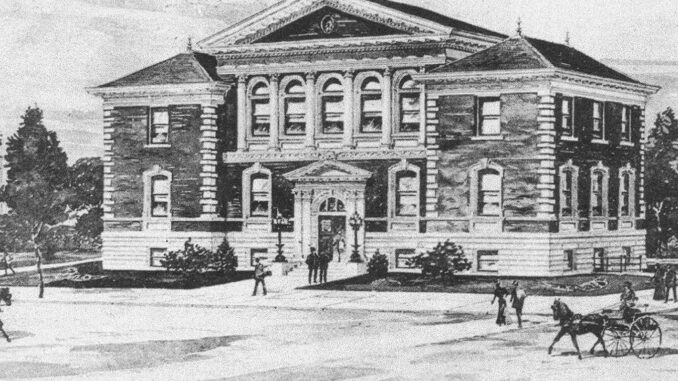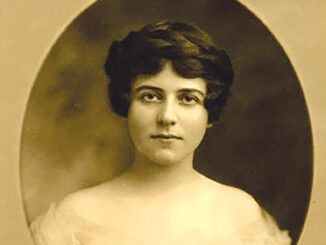
Setting: Warren County, Kentucky
Date: July 4, 1911
Characters: Father and son
“Pa, I have had the most fun today. I like getting with others playing games, singing and especially eating so much food.”
“Yes, son. Celebrating the birth of our free nation is very important. Today we recognized 135 years of freedom from imperial rule and 35 years with July 4 an official federal holiday.”
“Why did the speaker say we were glad to be in beautiful Kentucky?”
“You heard the man refer to Amundsen who with other explorers are facing the bitter cold in search of the true South Pole. Then he spoke of the massive heatwave in the northeast where so many are dying. The people here are just lucky to be living in Kentucky free of disasters.”
However, a disastrous event did hit Bowling Green, Kentucky early the next morning, July 5,1911. The fire department received a call of a fire on State Street. Unfortunately, it was not the best of times for the department: during a political situation, older experienced firemen had been released and a new crew of firemen was just getting organized when this destructive fire occurred. Two horse-drawn wagons, along with the horse-drawn hook and ladder truck, were rushed to the Patterson and Patterson Livery Stables, the origin of the flames. Nearby the stable were small structures, the blacksmith shop, the Christian Church, a hardware store and others that were caught up in flames very soon. The roar of the flames, the sound of ammunition going off in the hardware store, and the intense heat made this truly a disastrous morning.
“Pa, how did this fire start?”
“Chief W.J. Hendricks said it looked like it started as a spontaneous combustion when the hay got so hot it burst into flames.”
“Pa, look, the fire is rapidly reaching the tall building.”[Mary Alic1]
Standing on the corner of State Street and Tenth Avenue was the majestic McCormack building. It was the only four-story building in Bowling Green. Modeled after the Equitable Insurance building at Fourth and Jefferson in Louisville, the handsome building was built by Drs. J.N. McCormack and A.T. McCormack in 1898.The building was 100 x 103 feet, giving it a combined area of 40,000 square feet. It was built to have perfect distribution of light and air and had no dark areas. The front and sides were built with terra cotta brick furnished by McEwing and Thomas of St Louis, Missouri. It was lighted throughout with electric lighting and heated with steam. The McCormack was to Bowling Green a welcome addition to the downtown setting,
“Did people live in the tall building, Pa?”
“No, son. It contained several different kinds of business. Most important, it houses the offices of our city officials. That building is our city hall with all the other departments housed in the three buildings we are standing beside next to the Presbyterian Church.”
Included in the building’s directory were Bowling Green Business University, the Park City Bowling Green Gas Lights Company, news offices of the R.B. Hines and Company, Edgar Sims and Company, Bowling Green the Brokage Company, Equitable Life Insurance, and Misses Sumpter. The fourth floor contained the handsomely decorated rooms of the Elk Club, a setting admired statewide. Also on this floor were the Knights of Pythias and various reception rooms for other German groups.
Other groups losing their location due to the fire were Woman’s Public Library, the Park City Bowling Alley, the office of Dr. Hugh Beasely, the grocery store of R.C. Posey, the Wilson’s Drug Store, and the Warren County Hardware Store. Occupants of business on the second, third, and fourth floors had easy access by means of a hydraulic elevator, the only passenger elevator in this part of the state.
“Look, Pa, at the front of the tall building. It looks scary with just the front wall and all those blank windows gone.”
“Yes, and they will probably fall soon. Come, let’s go look at the side of the building. Here is one thick wall at the base. That is so solid I expect it could last a hundred years or more.” (You are correct, sir, because it existed in 1950s when CDS was in that space and today in 2024 the wall can still be seen.)
The handsome McCormack structure was truly a monument not only to both doctors but to the city as well. Actually, it served as the city hall where some city council actions were conducted. Meanwhile, one block away on the corner of Tenth and Center streets, with the leadership of George T. Wilson, efforts to consolidate all facets of city business were taking shape with the new building completed in 1906. It was no easy task with the many areas of services that needed housing: City Physician, Library, Chief of Police, Police Court, City Engineer, City Attorney, Prosecuting Attorney, jail cells, the City Manager’s office and lower level staff, Human Resources, reception desk… Health Department. (Above list is from the history of the City Hall and suggests the vast importance of an effective city government.)
In comparison to the “city hall” of 1797, the Mayor and City Clerk seemed just as involved in light of records, the office was busy with granting licenses to run any kind of enterprise, recording claims or sales, tax collecting, road, bridge and small dam construction, probating wills, registration of stray dogs, land claims, boundaries, litigations, records taken from city officials’ meeting and a host of other responsibilities. The more we learn the more we feel respect and thanks for all these city officials of our great city. Wonderful, wonderful Bowling Green. Oh, what a gem of a town!
-by Mary Alice Oliver
About the Author: Mary Alice Oliver is a Bowling Green native who is a 1950 graduate of Bowling Green High School. She retired from Warren County Schools after 40 years in education. Visiting familiar sites, researching historical records and sharing memories with friends are her passions.






